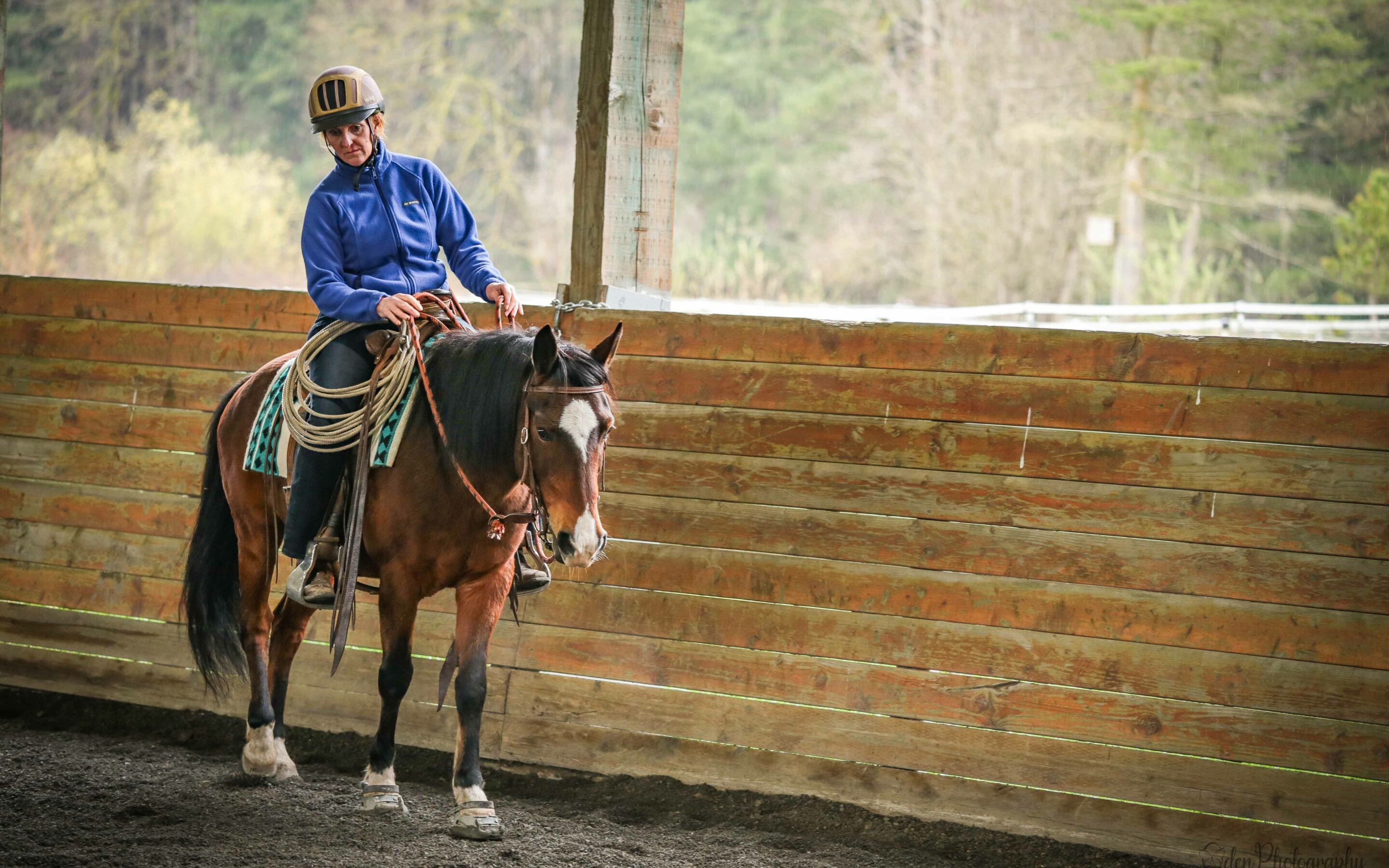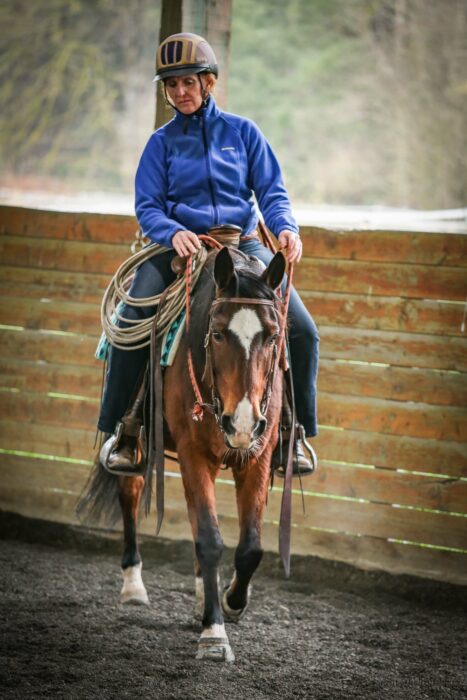Kirsten L has been riding Artie for several months, and brought him in to the March Joel Conner clinic. Here is her report on the experience:
“Mr. Artie Shaw is quite the gentleman! This was my first riding clinic with Joel and Artie was incredibly patient with my learning curve. Levelheaded. Confident with new horses. Unflappable when asked to walk, trot, lope, and didn’t spook once. We’ve found a sweet spot when bridling to help him with his history of poll shyness – he likes slow movements, lots of gentle rubs and routine! He stands well when saddling and is excellent when putting the boots on his front feet and equally as great at lifting his back feet. Like a true gentleman, Artie has much to give a future adopter including taking great care of his rider and a willingness to provide a stable start for a new owner!”
Terry has the following addition about Kirsten and Artie during the clinic:
“I was thoroughly impressed with Kirsten and Artie’s performance in the clinic. Despite it being Artie’s first-time riding through the full three-day, three-hour classes, he seemed to maintain his energy levels throughout. Kirsten even worked with him at the lope towards the end of the last day. This is a significant achievement for the little pony, considering he initially struggled with enthusiasm, showing more “whoa” than “go” at the start of his riding career.
However, one issue arose during the class when Artie began shaking his head, showing reluctance to stand still, and even exhibiting a little hop with his front end. I decided to mount him to assess the situation. After a brief examination, it became clear that he was unhappy with the bit having extra contact in both reins. It was reassuring to see that his discomfort did not escalate into anything dangerous.
Kirsten demonstrated her skill by adjusting her contact and providing more significant releases in the reins and her body language to communicate to Artie that she was no longer asking him to do something. Offering a horse peace even within movement is a crucial lesson for riders and handlers alike. It communicates to the horse that as long as they stay connected and doing what was asked, continual cuing is not needed.
I often liken this to driving with a turn signal left on after changing lanes. The constant clicking becomes grating, much like Artie’s discomfort with excessive contact in the bridle beyond what is necessary. Observing Artie’s responses to different riders and his boundaries regarding what he is willing to tolerate provides valuable insights.
Overall, it was a great learning experience for Kirsten, and it was heartening for us to witness Artie’s adaptability and his clear communication of his needs.”



